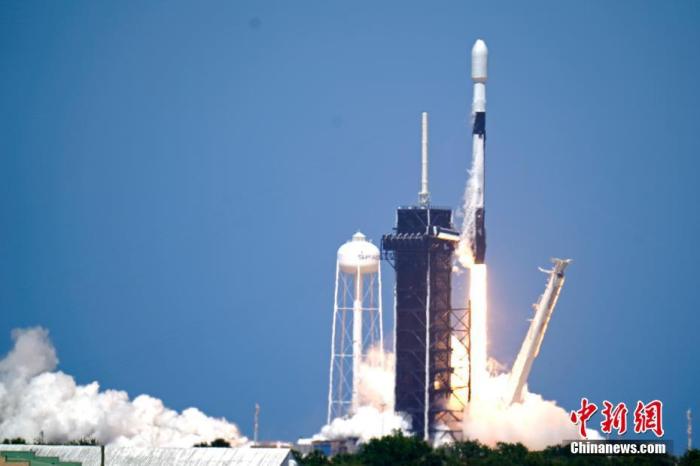Xinhua News Agency, Washington, February 10 (Reporter Tan Jingjing) According to a number of US media reports on the 10th, NASA expressed concern about the second-generation "Starlink" plan of the US space exploration technology company.
The space agency said the plan to deploy an additional 30,000 satellites in low-Earth orbit could create "severe congestion" in orbit, increasing the risk of collisions and affecting NASA's scientific research and human spaceflight missions.
Data map: A "Falcon 9" rocket carrying 60 "Starlink" satellites was launched from the Kennedy Space Center in Cape Canaveral, Florida, United States.
NASA said in a letter to the Federal Communications Commission on the 8th that there are currently about 25,000 objects in orbit around the earth, of which about 6,100 objects have perigee altitudes below 600 kilometers.
The second-generation "Starlink" plan will more than double the number of objects in orbit around the Earth and more than quadruple the number of objects in orbits with perigee altitudes below 600 kilometers.
SpaceX launched the first batch of 60 "Starlink" satellites into space on May 23, 2019, and plans to build a "Starlink" network consisting of about 12,000 satellites in space between 2019 and 2024 , providing high-speed Internet access from space to Earth.
In May 2020, the company submitted an application for the implementation of the second-generation "Starlink" program to the Federal Communications Commission, and plans to deploy an additional 30,000 satellites, bringing the total number of satellites to 42,000.
The application is currently under review by the Federal Communications Commission.
In a letter to the Federal Communications Commission, NASA said that adding so many Starlink satellites to a limited orbital altitude would necessarily increase the risk of satellite debris impacts, based on the number of objects in the above-mentioned orbits alone.
It is necessary to ensure that the deployment of the second-generation "Starlink" system is "prudent" to maintain the safety of spaceflight and the long-term sustainability of the space environment.
NASA recommended that SpaceX provide an analysis report that proves that the company has the ability to control the "Starlink" satellites it plans to deploy.
U.S. media reported on the 9th that SpaceX launched a total of 49 "Starlink" satellites in a single launch on February 3, but encountered a geomagnetic storm the next day, and as many as 40 satellites were unable to return to normal orbits. damaged by height.
The astronomy community has long expressed concern that the sheer number of satellites could affect astronomical observations.
Some space experts have warned that deploying such large numbers of satellites could create "space congestion" or "space junk."

